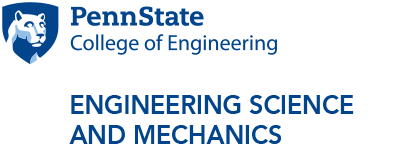Semiconductor Spectroscopy Lab
Under the guidance of Patrick M. Lenahan, Distinguished Professor of Engineering Science and Mechanics, the lab uses several magnetic resonance techniques and a variety of electronic measurements to study the imperfections that limit the performance of semiconductor devices and develop a fundamental understanding of materials physics problems in microelectronics.
The work is done in collaboration with researchers at leading industrial and government research and development laboratories.
Key Faculty:
Lab Capabilities:
Magnetic Resonance Spectrometers
Currently there are three state-of-the-art commercial ESR spectrometers manufactured by Bruker-Biospin in the lab. The systems operate at X-band frequencies (~9 to 10 GHz). One of the systems is equipped with an electron nuclear double resonance (ENDOR) capability which, for certain defects, allows determination of extremely detailed defect structure.
Additionally, there are six electrically detected magnetic resonance (EDMR) spectrometers primarily utilized for spin dependent recombination (SDR) and spin-dependent trap-assisted tunneling (SDTAT). These systems are homemade. Three systems operate at X-band (about 10 GHz), a fourth system operates at K-band (about 16 GHz), and the fifth and sixth systems operate at low frequencies, up to approximately 350MHz. To the best of our knowledge, these EDMR/SDR/SDTAT systems are the most sensitive anywhere in the study of semiconductor devices. With great effort and relatively ideal devices, these systems have a sensitivity of better than 1000 defects at room temperature in fully processed devices.
Additional Apparatus:
-
A conventional MOS capacitance-versus-voltage system with a mercury probe
-
A Kelvin probe electrostatic voltmeter
-
Several corona discharge systems for contact-less application of dielectric bias
-
Ultraviolet illumination and vacuum ultraviolet systems useful for flooding oxides with electrons and holes
-
A wire bonder
-
Two ellipsometers
-
A semiconductor parameter analyzer
-
Two liquid helium cryostat systems for low temperature ESR, ENDOR, and EDMR measurements
-
Two liquid nitrogen cryostat systems for low temperature ESR, ENDOR, and EDMR measurements
The lab also includes a glove box, two fume hoods, one small tube furnace, a vacuum system for metal deposition, two nuclear magnetic resonance (NMR) Gaussmeters, and five Hall Effect Gaussmeters. A few common electronics lab items include electrometers, constant current sources, power supplies, oscilloscopes, frequency counters, and vacuum pumps.
Research Activities:
Microelectronics
Professor Lenahan and his graduate students are collaborating with researchers at Intel Corporation on studies of new low dielectric constant based metal oxide silicon systems (CMOS) which will be utilizing complimentary metals which will almost certainly dominate the microelectronics technology of the coming decade. His group is also collaborating with researchers at the U.S. Army Research Laboratory in Adelphi, MD, and Infineon Corporation in the development of high-power and high-temperature electronics based upon silicon carbide.
Along with researchers at the NASA Jet Propulsion Laboratory at the California Institute of Technology in Pasadena, CA, Professor Lenahan's group is working on the development of robust and extremely senstive magnetic field sensors for deep space applications. With researchers at The Ohio State University and the University of Wisconsin, Lenahan's group is also investigating systems involving interfaces between perovskite crystals for multiple novel electronic applications. In conjunction with investigators at the the University of Texas at Dallas, Lenahan's group is working on the development of new thin film solar cells.
In all of this microelectronics-related research, magnetic resonance and electrical measurements are utilized to provide a fundamental understanding of the materials physics involved in determining the performance of electronic devices. The work is carried out in collaboration with leaders in technology. This collaboration with leading technologists allows the basic research carried out at Penn State to contribute directly to technology.
Quantum Computing
Professor Lenahan's group is working to develop spin-based quantum computing in collaboration with researchers at the National High Magnetic Fields Laboratory (NHMFL). With NHMFL researchers, the group is utilizing very high magnetic fields and SDTAT, SDR, and EDMR to develop universal quantum computing gates.
Facilities and Labs
- Advanced Microscopy Lab
- Biodetection Lab
- Biomimetics Lab
- Bioprinting Lab
- CNEU Teaching Cleanroom
- Composite Materials Lab
- Corrosion Research Lab
- Fourier Optics Lab
- Mechanical Behavior Lab
- Nanofabrication Lab
- Non-linear Dynamics Lab
- Optoelectronics Lab
- Penn State Ultrasonics Lab
- Semiconductor Spectroscopy Lab
- Soft Matter Mechanics Lab
- Tribology/Materials Processing Lab





